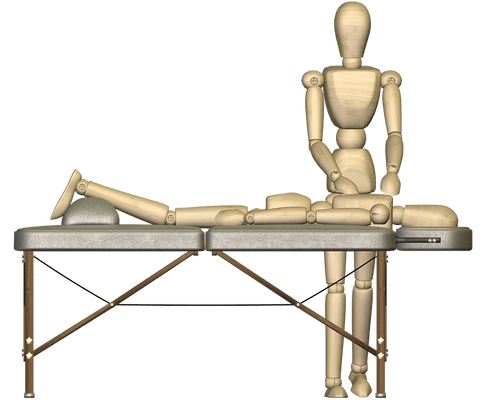SUBLUXATED RIB
OR RIB TISSUE PROBLEMS?
The first thing that must happen is that the really bad things must be ruled out. Heart and Cardiovascular Problems are at the top of this list, but there can be others. Be aware that a Heart Attack can mimic muculoskeletal pain of various sorts. Also be aware that ischemia (lack of oxygen) from chronically clogged arteries can cause similar symptoms as well. Secondly, understand that while X-rays are a valuable diagnostic tool, unless you suspect a fracture, they are probably not going to provide pertinent information as far as short term pain relief is concerned.
Most of the time, a rib problem is going to manifest as pain in the area of the rib cage (all 360 degrees are potential places for pain to show its ugly head). This pain is typically sharp / severe, and is aggravated by coughing, sneezing, laughing, breathing, and other similar things. Interestingly enough, as severe as rib pain can be, it is not dangerous like a HERNIATED DISC can be. Another interesting fact about Subluxated Ribs is that as severe as their pain can be, when they are adjusted correctly, the pain relief is often instantaneous. If you are seeing someone for rib pain and getting adjusted over and over and over with no discernible decrease of your pain, something is being overlooked. Most of the time, this is either because the adjustment is not being done correctly, or more likely because there is a problem with the tissues around the rib.
Think about it this way. If you’ve ever eaten a rack of ribs before (and who hasn’t?), you realize how much meat there is on the ribs. There is also a lot of Connective Tissue as well — particularly Fascia. Anytime FASCIA is a primary player, the potential for pain is there (HERE are several articles to help you understand why). Sometimes it can be difficult to determine whether or not a problem is Rib Subluxation or Rib Tissue. Here are a few “rules” to keep in mind (bear in mind that none of these rules would be considered ‘hard’ or ‘fast’.
- Have you been adjusted? If you have been adjusted several times and still have the pain, odds are that your rib is not simply “out of place“. There is probably more to it, and one of the first things to think about is SCAR TISSUE.
- Does it hurt to move? Although a Rib Subluxations can hurt to move, in my experience, movement is more likely to bother someone with a Rib Tissue problem than a Rib Subluxation.
- Where does it hurt? If the pain is closer to the spine, there is a greater chance of it being a Rib Subluxation. The further away from the spine or breastbone that the pain is, the greater the chance it is Rib Tissue and not Rib Subluxation.
- Does the pain move or travel? With Rib Tissue issues, the pain is more likely to stay put, while Rib Subluxations can (and often do) create an irritation in the nerve than can travel all the way around the rib to the front.
As you can see, none of this is what I would call an exact science. Typically, the potentially severe pain of a Rib Subluxation will resolve rapidly with a proper adjustment. If I cannot get a relatively rapid improvement or resolution in my clinic, I may start checking to see if it is a Rib Tissue problem. In fact, I will sometimes check for a Rib Tissue problem immediately after adjustment if a person does not get the relief I think they should. HERE is a recent article I wrote on Rib Tissue Pain, complete with a couple of VIDEO TESTIMONIALS.


One Response
This is a great article